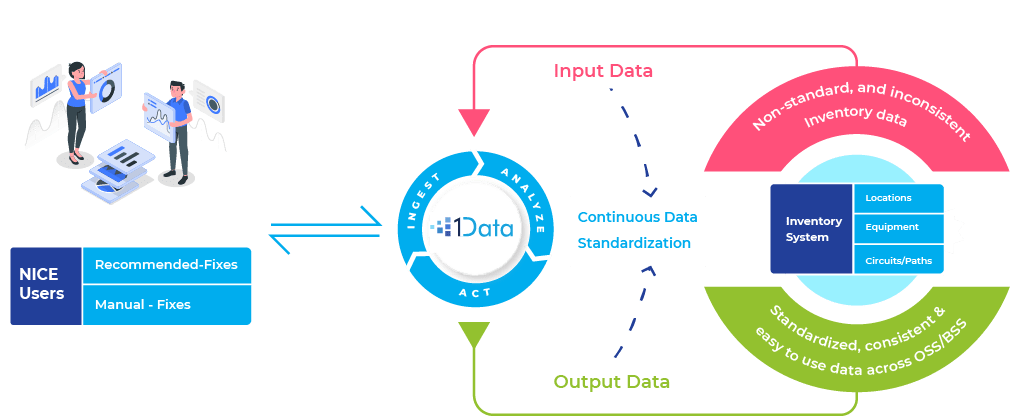Business Overview
Our client is one of the leading mobile network operators (MNO) in the United States.
Business Problem
The Inconsistent and non-standardized data content in the Inventory System was causing multiple business revenue and cost efficiency issues for the MSO Enterprise Services organization. Some of the key challenges are listed below:
- Inaccurate reports on customer services, network assets utilization and service volumes
- Service provisioning delays due to inaccurate network design requiring costly and time-consuming order reprocessing
- Delays in customer service activation increasing Time-to-Revenue
- Under-utilized network assets resulting in unnecessary capital expenditure
- Impeding multiple process automation and efficiency initiatives
- Multiple mergers/acquisitions significantly increasing quantity of similar but non-standardized data
- Newly created data standards applied only to new data records.

Solution
Sincere developed a thorough understanding of the client’s requirements and deployed its 1Data Platform customized as per the client’s needs. This configuration includes:
- 1Data software platform was deployed to correct Inventory System data based on organization’s data standards and to continuously monitor and correct new data records.
- 600+ data standardization rules were implemented in four stages using MySQL and Python scripts.
- Over 250,000 service records for 16 service types were analyzed and corrected for data completeness and standardization.
- 1Data data standardization and correction Tasks are invoked through APIs by provisioning system to scan and correct Service Orders prior to processing to reduce fallouts.
Benefits:
- Automation reduced Order Design and Activation costs by over $1.25 million per year
- Customer Installation & Turn up failures reduced by 25%
- Order reprocessing & Service Provision Activation due to inaccurate design was reduced by 33%
